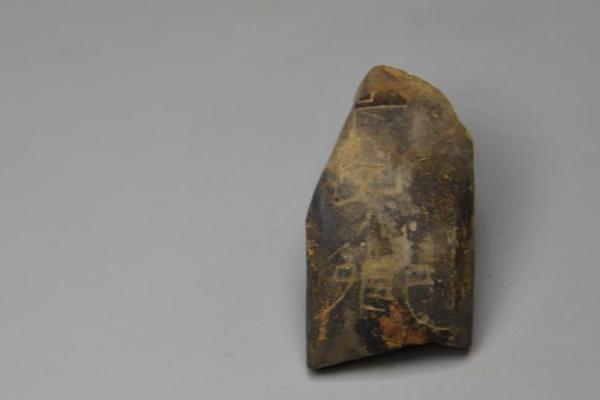
1. First, view file encoding: In Linux, you can check the file encoding through the followingMethod: You can directly view the file encoding in Vim: setfileencoding can display the file encoding format.
2. ifconfig: the most commonly used command to configure and view network interface information. If you execute this command on the server, you will get the following content. You can see the status and information of multiple devices and devices.
3. How to check the process number in the linux system? The way to view the process number in the Linux system is as follows. The ps command finds the PID number related to the process: psa displays all the programs under the current terminal, including the programs of other users. ps-A shows all programs.
4. The encoding format is generally utf8 or gb123 linux. How to view the character set encoding of the file?You can execute the file command on the command line to view the return information to confirm the character set encoding of the file.
5. First, we open the system and log in to the system with the root account. Then use the command "file -i /opt/test.log" to view the file encoding format of test.log. The specific display is shown in the figure below. Next, we will introduce the usage of the command iconv. First, let's check the help document.
6. Connect to the corresponding Linux host, enter the Linux command line state, and wait for the input of the shell command. Secondly, type echo $LANG on the Linux command line. Finally, press the Enter key to execute the shell command. At this time, you will see that the Chinese character code of the linux is utf-8.

In Linux, a tool convmv is specially provided for the conversion of file name encoding, which can convert file names from GBK to UTF-8 encoding, or from UTF-8 to GBK.First of all, check whether convmv is installed on your system. If not, use: yum-yinstallconvmv to install it.
I. View file encoding: You can view file encoding in Linux in the following ways: You can directly view file encoding in Vim: setfileencoding can display the file encoding format.
In addition, the default process opening file limit of Linux is 1024, which can be viewed through ulimit-n. The upper limit of many systems can be changed by modifying the /etc/security/limits.conf file. This file has detailed comments on how to modify it.
ue How to modify the character set?View and modify the character set under the Windows platform. View the character set: chcp modifies the character set to 936: chcp936 can get the code page information of the operating system. You can view the detailed character set information corresponding to the code page from the language options of the control panel.
Check the system language, modify the configuration file, and configure it to take effect. First, check the current system language of linux and enter the command: locale. Secondly, modify the configuration file/etcprofile, and specify the command v/etcprofile. Finally, make the configuration file /etcprofile take effect, and enter the command: sourceetcprofile.
I. View file encoding: You can view file encoding in Linux in the following ways: You can directly view file encoding in Vim: setfileen Coding can display the file encoding format.
First, we open the system and log in to the system with the root account. Then use the command "file -i /opt/test.log" to view the file encoding format of test.log. The specific display is shown in the figure below. Next, we will introduce the usage of the command iconv. First, let's check the help document.
How does linux view the character set encoding of the file?You can execute the file command on the command line to view the return information to confirm the character set encoding of the file.
The encoding format is generally utf8 or gb123 linux. How to view the character set encoding of the file? You can execute the file command on the command line to view the return information to confirm the character set encoding of the file.
Convert windows file encoding in linux? View file encoding. You can view file encoding in Linux in the following ways: You can directly view file encoding in Vim: setfileencoding can display the file encoding format.
The command ls-l can list all the files in the specified directory in a long format. How to change the encoding format of the file under Linux?Use VIM to view file encoding. In Vim, you can directly view file encoding: setfileencoding can display the file encoding format.
1. First, view file encoding: View file encoding in Linux can be done through the following Several ways: You can directly view the file encoding in Vim: setfileencoding can display the file encoding format.
2. First, we open the system and use the root account to log in to the system. Then use the command "file -i /opt/test.Log" to check the file encoding format of test.log. The specific display is shown in the figure below. Next, we will introduce the usage of the command iconv. First, let's check the help document.
3. Use the file command: the file command can be used to determine the type of file, including the encoding format. Enter the following command in the terminal: file file name, where the file name is the name or path of the file you want to view. After executing this command, the terminal will display the file type and encoding format.
4. Convert the file encoding to UTF-8 encoding. The code is as follows: enca -L zh_CN -x UTF-8 file1 file2 If you don't want to overwrite the original file, you can do it like this. It's very simple.
5, fileword.Txtword.txt: ASCIItext Judging from the results, the file is in gbk format. If it does not meet the requirements, the file format can be changed through the iconv command.
TNT Sports-APP, download it now, new users will receive a novice gift pack.
1. First, view file encoding: In Linux, you can check the file encoding through the followingMethod: You can directly view the file encoding in Vim: setfileencoding can display the file encoding format.
2. ifconfig: the most commonly used command to configure and view network interface information. If you execute this command on the server, you will get the following content. You can see the status and information of multiple devices and devices.
3. How to check the process number in the linux system? The way to view the process number in the Linux system is as follows. The ps command finds the PID number related to the process: psa displays all the programs under the current terminal, including the programs of other users. ps-A shows all programs.
4. The encoding format is generally utf8 or gb123 linux. How to view the character set encoding of the file?You can execute the file command on the command line to view the return information to confirm the character set encoding of the file.
5. First, we open the system and log in to the system with the root account. Then use the command "file -i /opt/test.log" to view the file encoding format of test.log. The specific display is shown in the figure below. Next, we will introduce the usage of the command iconv. First, let's check the help document.
6. Connect to the corresponding Linux host, enter the Linux command line state, and wait for the input of the shell command. Secondly, type echo $LANG on the Linux command line. Finally, press the Enter key to execute the shell command. At this time, you will see that the Chinese character code of the linux is utf-8.

In Linux, a tool convmv is specially provided for the conversion of file name encoding, which can convert file names from GBK to UTF-8 encoding, or from UTF-8 to GBK.First of all, check whether convmv is installed on your system. If not, use: yum-yinstallconvmv to install it.
I. View file encoding: You can view file encoding in Linux in the following ways: You can directly view file encoding in Vim: setfileencoding can display the file encoding format.
In addition, the default process opening file limit of Linux is 1024, which can be viewed through ulimit-n. The upper limit of many systems can be changed by modifying the /etc/security/limits.conf file. This file has detailed comments on how to modify it.
ue How to modify the character set?View and modify the character set under the Windows platform. View the character set: chcp modifies the character set to 936: chcp936 can get the code page information of the operating system. You can view the detailed character set information corresponding to the code page from the language options of the control panel.
Check the system language, modify the configuration file, and configure it to take effect. First, check the current system language of linux and enter the command: locale. Secondly, modify the configuration file/etcprofile, and specify the command v/etcprofile. Finally, make the configuration file /etcprofile take effect, and enter the command: sourceetcprofile.
I. View file encoding: You can view file encoding in Linux in the following ways: You can directly view file encoding in Vim: setfileen Coding can display the file encoding format.
First, we open the system and log in to the system with the root account. Then use the command "file -i /opt/test.log" to view the file encoding format of test.log. The specific display is shown in the figure below. Next, we will introduce the usage of the command iconv. First, let's check the help document.
How does linux view the character set encoding of the file?You can execute the file command on the command line to view the return information to confirm the character set encoding of the file.
The encoding format is generally utf8 or gb123 linux. How to view the character set encoding of the file? You can execute the file command on the command line to view the return information to confirm the character set encoding of the file.
Convert windows file encoding in linux? View file encoding. You can view file encoding in Linux in the following ways: You can directly view file encoding in Vim: setfileencoding can display the file encoding format.
The command ls-l can list all the files in the specified directory in a long format. How to change the encoding format of the file under Linux?Use VIM to view file encoding. In Vim, you can directly view file encoding: setfileencoding can display the file encoding format.
1. First, view file encoding: View file encoding in Linux can be done through the following Several ways: You can directly view the file encoding in Vim: setfileencoding can display the file encoding format.
2. First, we open the system and use the root account to log in to the system. Then use the command "file -i /opt/test.Log" to check the file encoding format of test.log. The specific display is shown in the figure below. Next, we will introduce the usage of the command iconv. First, let's check the help document.
3. Use the file command: the file command can be used to determine the type of file, including the encoding format. Enter the following command in the terminal: file file name, where the file name is the name or path of the file you want to view. After executing this command, the terminal will display the file type and encoding format.
4. Convert the file encoding to UTF-8 encoding. The code is as follows: enca -L zh_CN -x UTF-8 file1 file2 If you don't want to overwrite the original file, you can do it like this. It's very simple.
5, fileword.Txtword.txt: ASCIItext Judging from the results, the file is in gbk format. If it does not meet the requirements, the file format can be changed through the iconv command.
 Champions League
Champions League
542.78MB
Check bingo plus update today
bingo plus update today
956.13MB
Check UEFA live free
UEFA live free
833.72MB
Check Casino Plus login register
Casino Plus login register
579.38MB
Check casino plus free 100
casino plus free 100
888.74MB
Check UEFA TV
UEFA TV
782.84MB
Check Bingo Plus stock
Bingo Plus stock
969.71MB
Check Casino Plus app
Casino Plus app
574.66MB
Check casino plus free 100
casino plus free 100
247.51MB
Check Casino free 100 no deposit
Casino free 100 no deposit
444.57MB
Check Europa League app
Europa League app
721.57MB
Check UEFA Champions League
UEFA Champions League
573.85MB
Check Walletinvestor digi plus
Walletinvestor digi plus
331.61MB
Check bingo plus update today Philippines
bingo plus update today Philippines
266.84MB
Check Hearthstone deck
Hearthstone deck
976.64MB
Check Arena plus APK
Arena plus APK
918.74MB
Check PAGCOR online casino free 100
PAGCOR online casino free 100
951.97MB
Check Hearthstone Wild Decks
Hearthstone Wild Decks
228.91MB
Check Casino redeem
Casino redeem
714.18MB
Check LR stock price Philippines
LR stock price Philippines
291.94MB
Check Europa League app
Europa League app
319.11MB
Check Hearthstone Arena Tier List
Hearthstone Arena Tier List
358.36MB
Check Hearthstone Arena Tier List
Hearthstone Arena Tier List
735.47MB
Check Casino Plus
Casino Plus
234.77MB
Check UEFA Champions League live streaming app
UEFA Champions League live streaming app
393.41MB
Check UEFA Europa League
UEFA Europa League
689.16MB
Check UEFA Champions League
UEFA Champions League
832.95MB
Check DigiPlus stock
DigiPlus stock
777.51MB
Check DigiPlus fair value
DigiPlus fair value
334.16MB
Check Arena plus APK
Arena plus APK
149.22MB
Check European Cup live
European Cup live
125.97MB
Check UEFA EURO
UEFA EURO
799.31MB
Check Bingo Plus
Bingo Plus
244.19MB
Check PAGCOR online casino free 100
PAGCOR online casino free 100
317.47MB
Check Hearthstone Arena win rate
Hearthstone Arena win rate
369.28MB
Check UEFA Champions League live
UEFA Champions League live
323.76MB
Check
Scan to install
TNT Sports to discover more
Netizen comments More
1024 Hearthstone Arena Tier List
2025-01-07 05:31 recommend
1119 TNT Sports
2025-01-07 05:29 recommend
686 Champions League
2025-01-07 05:24 recommend
1070 Bingo Plus stock
2025-01-07 05:16 recommend
2452 UEFA Champions League live
2025-01-07 03:05 recommend